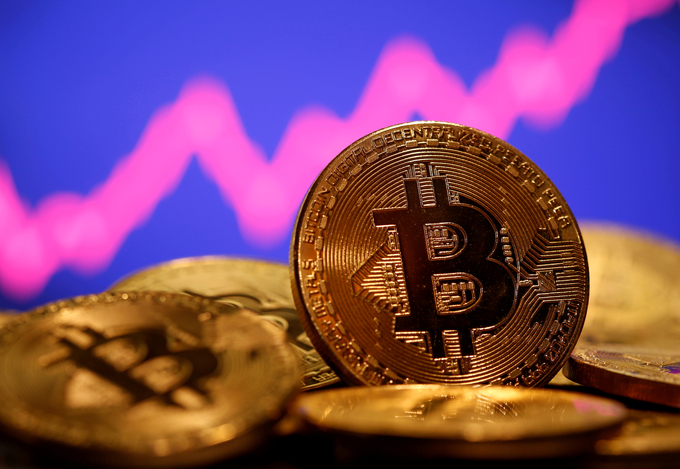
As the leading cryptocurrency bitcoin reached its first $50,000 mark on the 16th, the investment craze is rising.
However, while doubts about the actual value and future of bitcoin still remain unanswered, there is also a cautionary theory that a careful approach should be made to reflect the collapse of three years ago.
Cryptocurrency advocates are optimistic about further gains, saying that this rally is a market that is qualitatively different from the previous sharp rise.
The main difference is the addition of institutional investors such as global companies and financial companies.
At the end of 2017, when it reached 20,000 dollars and fell more than 80% to 3,000 dollars immediately the following year, the general analysis is that private investors led the bitcoin market.
On the contrary, the recent atmosphere can be seen as a’twin-twin’ rally in which companies and individuals raise bitcoin side by side. It is said that additional individual investors were also flocked to the institution’s collective money, thanks to the inflow of the cryptocurrency market and some of the questions about the future use value.
The decisive catalyst was that Tesla, an electric car company in the United States, bought $1.5 billion worth of Bitcoin and recently announced that it will accept it as a payment method for its products.
This is because Tesla CEO Elon Musk, who was admired by ants (individual investors) as’Papa Musk’, recognized the future of Bitcoin.
It was a symbolic milestone in the history of cryptocurrency that the New York Melon Bank (BNY Melon), the oldest bank in the United States and a global trustee, announced on the 11th that it will handle digital virtual assets including bitcoin.
In addition to these, Fidelity Investment has already obtained a virtual currency business license at the end of last year and is speeding up the related business, and Mastercard is pushing ahead with a plan to support specific virtual currency in its own network this year.
The US CNBC broadcast said that many Bitcoin investors believe that the current bull market is different from the 2017 bubble because it was triggered by demand from institutional investors.
MicroStrategy’s CEO Michael Sailor, who announced today that he would issue a $600 million convertible bond to buy bitcoin, appeared on CNBC, affirming that “Bitcoin has become a much more stable asset than three years ago.” .
Antony Trenchev, co-founder of London’s cryptocurrency lender, Nexo, told Bloomberg News, “Regardless of Musk, MasterCard and Morgan Stanley, the current mood and momentum is impossible to ignore.” “The coin express train has already left the station,” he said.
The discrepancy between supply and demand seems to have also contributed to the recent price surge.
The Wall Street Journal (WSJ) cited Brian Melville, head of the Cumberland Strategy Division, and reported that there were 150,000 newly mined bitcoins in August-December last year, while the number of bitcoins bought by investors during the same period reached 359,000. This means that demand has more than doubled the new supply.
Nevertheless, voices of skepticism and vigilance about cryptocurrency have not subsided.
Skeptics say bitcoin is nothing more than a speculative play among investors looking for a bite in the era of monetary easing, WSJ said.
Many raise concerns that Bitcoin is one of the biggest market’bubbles’ in history, according to CNBC. According to a recent survey by Deutsche Bank, Bitcoin was ranked as one of the two biggest bubbles in the financial market.
According to WSJ, unlike Tesla and Mastercard, many financial institutions are still suspicious of investing in digital currency due to extreme price volatility and lack of practical use.
Some opinions are raised that some of the cryptocurrency market prices can be manipulated.
‘Doctor Doom’ Nouriel Rubini, a professor at New York University in the United States, warned WSJ on the day that “many people are buying cryptocurrencies at ridiculous prices,” and that “you will not be able to lose money and recover.”
Prof. Rubini’s criticism is that Bitcoin has few practical uses and that it does not provide a stable income like bonds or securities.
In particular, the critical view of global financial authorities can be a big variable in the future of Bitcoin.
The European Central Bank of Europe (ECB) Christine Lagard said in a recent interview that bitcoin is not a real currency, “the ECB will not buy or hold it.”
Governor Lagard also urged more regulations on cryptocurrencies, citing the possibility of being used for money laundering.
US Treasury Secretary Janet Yellen said at a Senate approval hearing last month, “I think a lot of cryptocurrencies are mainly used for illegal finance. We need to consider ways to reduce such use and prevent money laundering.” Minister Yellen’s remarks immediately lowered the bitcoin price.
The Indian government announced on the 31st of last month that it is pushing ahead with legislation to ban the distribution of private cryptocurrencies.
It is pointed out that even among advocates, attention should be paid to the possibility of rapid price fluctuations in the short term.
“Short-term volatility is a key feature of this bull market,” said Mr. Tranchev. “Investors should prepare accordingly.”
